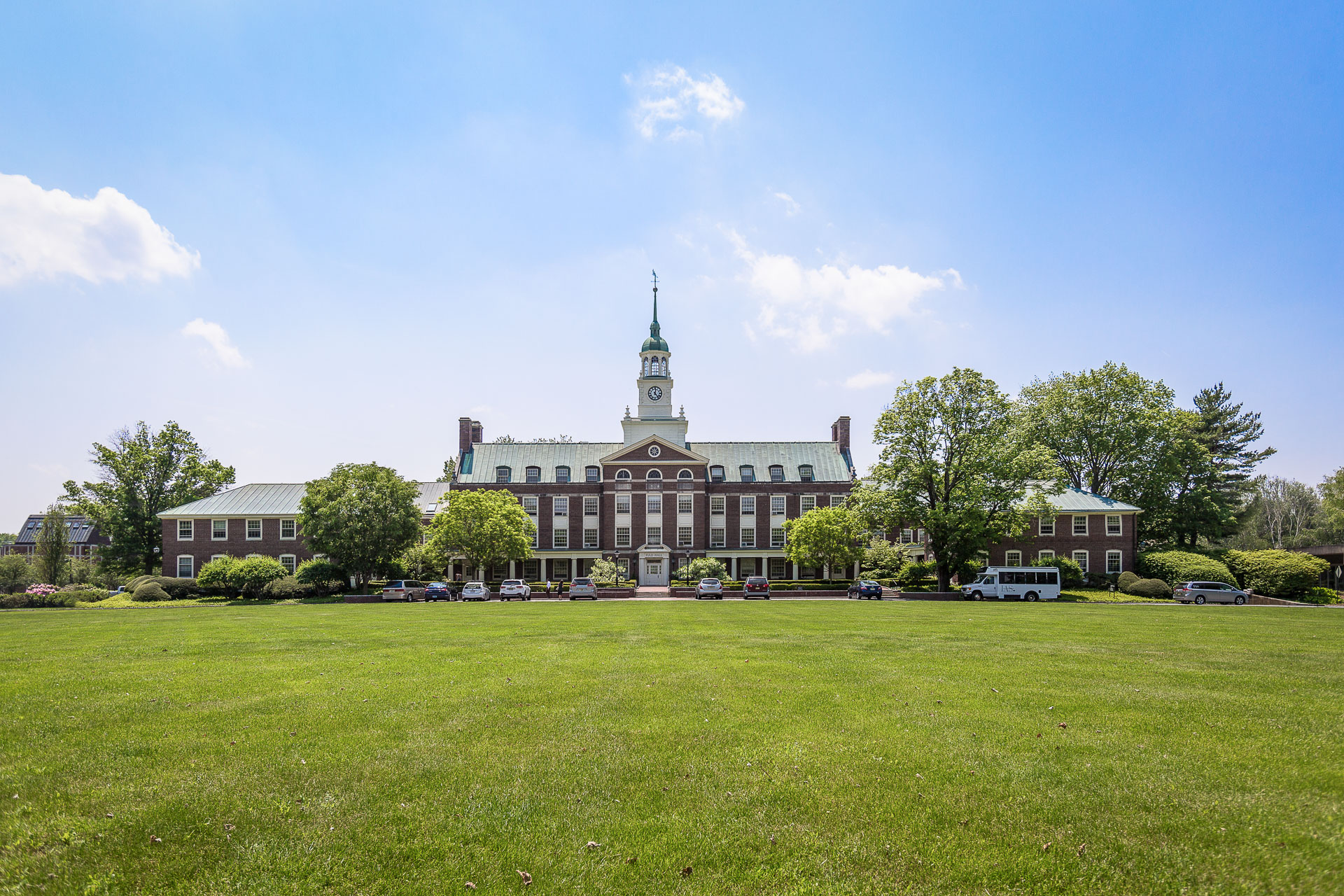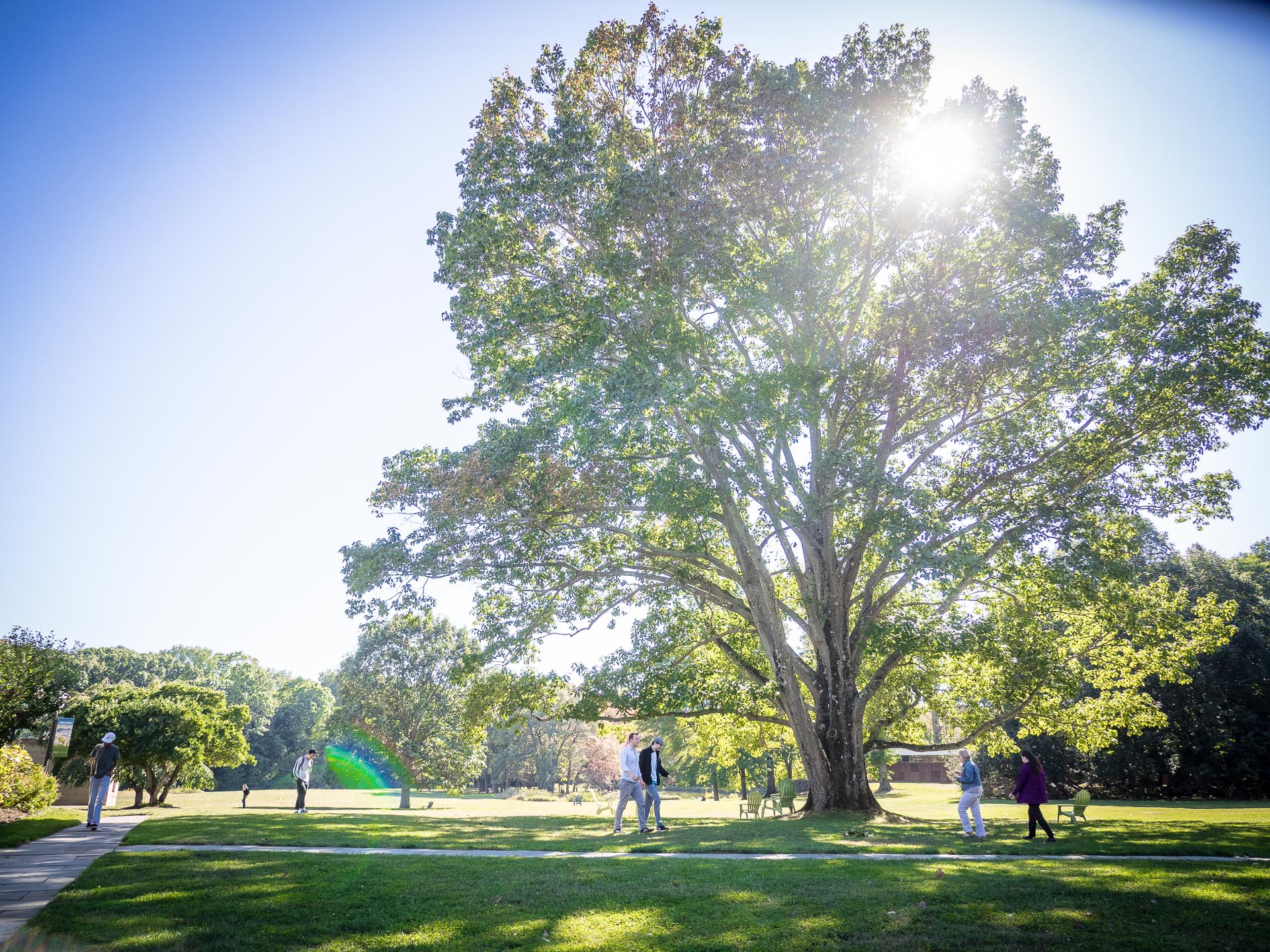
South Lawn, October 2017
About IAS
The Institute for Advanced Study is an international center for theoretical research and intellectual inquiry that provides an exceptional environment for the acceleration of new ideas and knowledge. From postdocs with new perspectives and tools to established scholars from around the world, and at various stages in their careers, researchers visiting the Institute are selected by twenty-five permanent Faculty, each of whom are preeminent leaders in their fields.
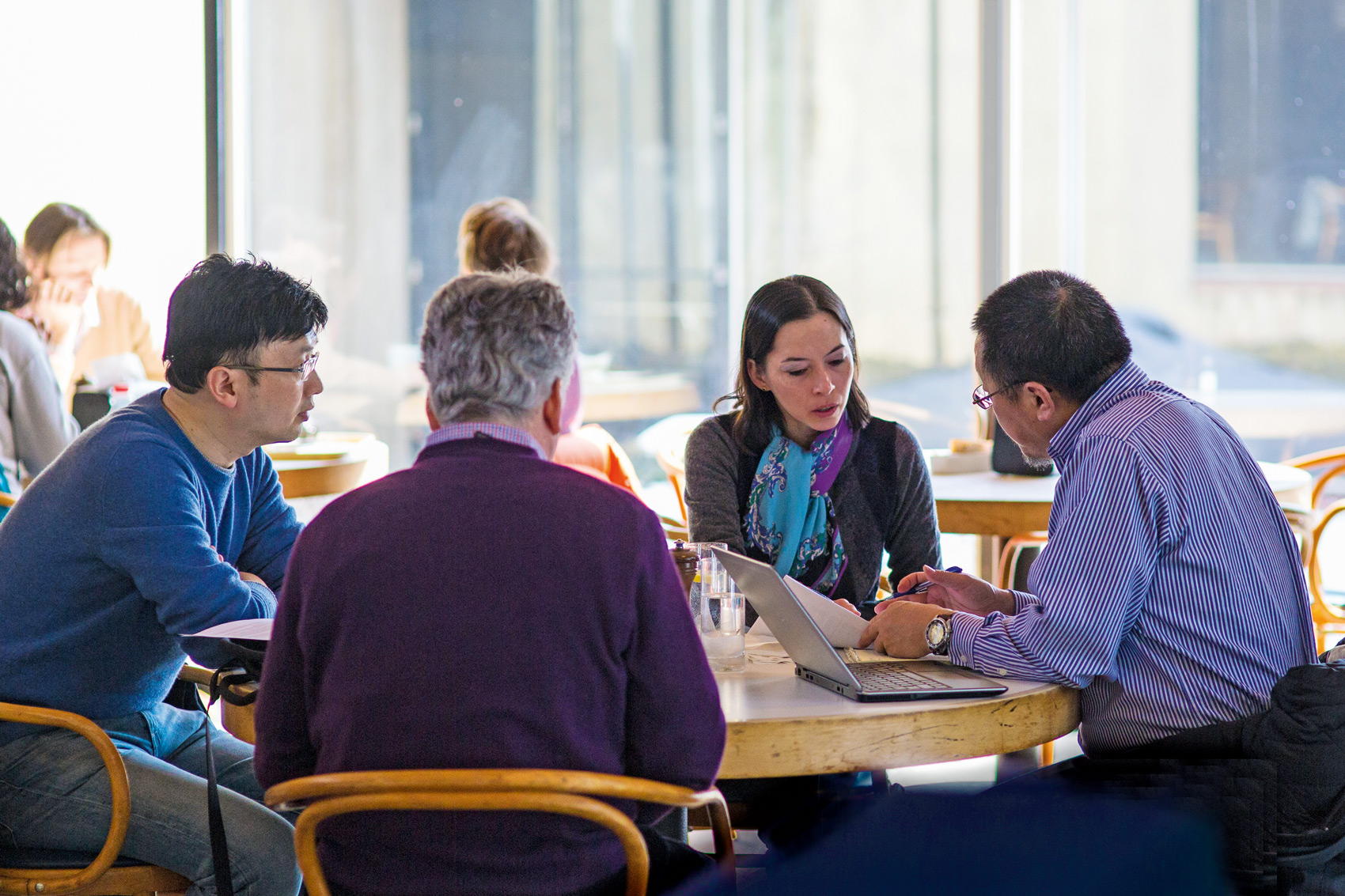
Simons Hall, February 2015
Research spans four Schools—Historical Studies, Mathematics, Natural Sciences, and Social Science—and is focused on long-term and fundamental outcomes with no concern for immediate application. IAS is a scholar’s paradise—a campus of unparalleled energy and curiosity, free of external pressures and academic restraints where exceptional minds have boundless opportunity to explore what is not yet known. Thirty-five Nobel Laureates, forty-two of the sixty Fields Medalists, and nineteen of the twenty-two Abel Prize Laureates, as well as many winners of the Wolf and MacArthur prizes, have been affiliated with the Institute.
Located in Princeton, New Jersey, the Institute was founded in 1930 with the motto “Truth and Beauty.” It is an independent educational institution that charges no tuition and relies on charitable contributions and grants for its operation. Sister-and-brother philanthropists Caroline Bamberger Fuld and Louis Bamberger established the Institute in the vision of educational reformer Abraham Flexner, IAS founding Director. It was Flexner’s belief that if the Institute
eschews the chase for the useful, the minds of its scholars will be liberated, they will be free to take advantage of surprises, and someday an unexpected discovery, apparently leading nowhere, will be found to be an indispensable link in a long and complex chain that may open new worlds in theory and practice.
Long and complex chains of knowledge have developed in numerous and astounding ways through research originating at the Institute—from the development of programmable computers and the uncovering of deep symmetries of nature to establishing art history as a discipline in the United States and advances in societal understanding and historical practice.
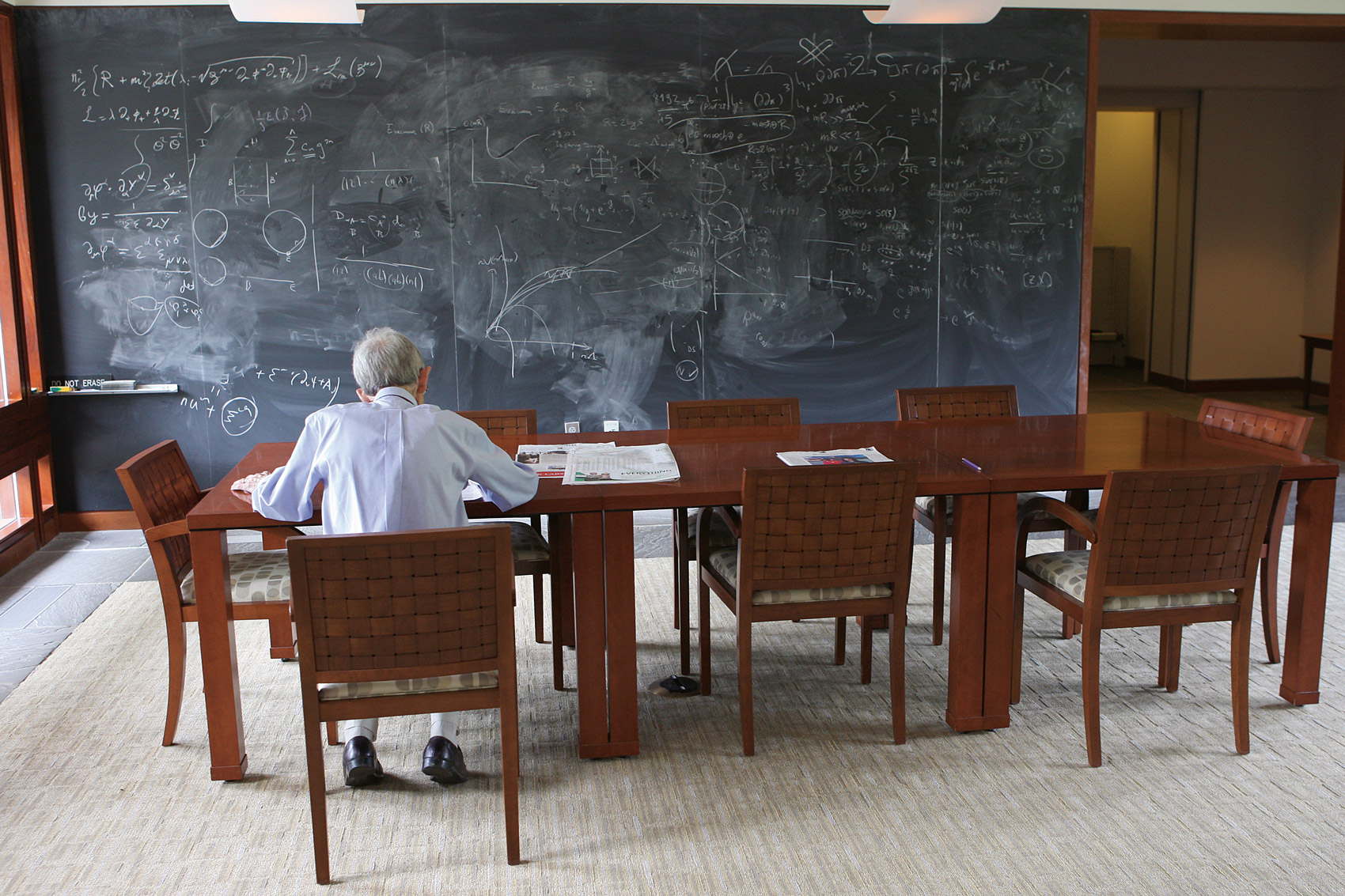
Freeman Dyson in Bloomberg Hall, May 2011
Current research at IAS includes
- pursuing a theory of everything that governs the smallest and largest objects in our universe, a unified framework pursued by IAS founding Professor Albert Einstein, father of the theory of relativity;
- using computational tools, models, and simulations to determine the origins and long-term fate of the universe;
- establishing the theoretical foundations of machine learning;
- reconstructing history through textual and material evidence, utilizing digital resources, climate data, and genetic information;
- examining facets of society previously overlooked or hidden, such as racial formation and social citizenship and emerging scientific and technological phenomena; and
- developing a critical anthropology of politics and morality.
Albert Einstein, Kurt Gödel, Hetty Goldman, George F. Kennan, Erwin Panofsky, John von Neumann, and Hermann Weyl were among the first in a long line of distinguished Institute scientists and scholars to produce a deeper understanding of the physical world and of humanity.
In the words of mathematical physicist Robbert Dijkgraaf, current IAS Director and Leon Levy Professor:
What do we know? What do we yet need to understand? How should we try to comprehend it? Fundamental research at the Institute furthers our grasp of a world of diverse facts, structures, ideas, and cultures. We share the conviction of our founders that such unrestricted deep thinking will change this world, but where and how is always a surprise.
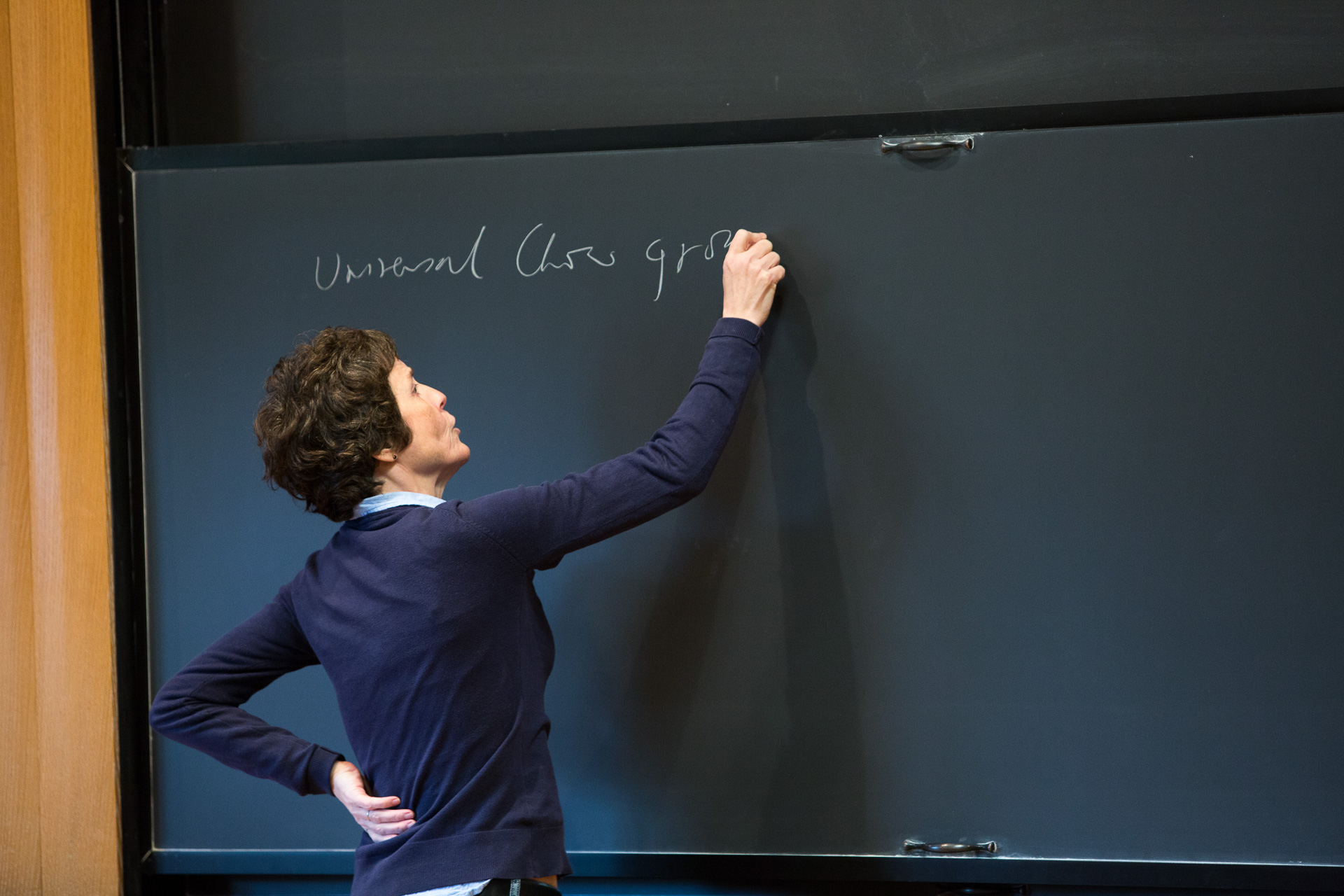
Claire Voisin, Simonyi Hall, November 2014
The Schools
The School of Historical Studies, established in 1949 with the merging of the School of Economics and Politics and the School of Humanistic Studies, actively promotes interdisciplinary research and cross-fertilization of ideas beyond conventional and professional boundaries, thereby encouraging the creation of new historical enterprises. From socioeconomic developments, political theory, and modern international relations, to the history of art, science, philosophy, music, and literature, Faculty and Members of the School practice a range of methods of inquiry, both traditional and innovative.
Faculty in the School of Historical Studies
The School of Mathematics, established in 1933, was the first School at the Institute for Advanced Study. Several central themes in mathematics of the twentieth and twenty-first centuries owe their major impetus to discoveries that have taken place in the School, which today is an international center for research on mathematics and computer science. John von Neumann, a founding Professor in the School from 1933–57, constructed the Electronic Computer Project on the IAS campus, providing the basis for the modern computer. In 2020–21, Distinguished Visiting Professor Geordie Williamson of the University of Sydney is leading a special year on Geometric and Modular Representation Theory to explore the many facets of modular representations and develop the algebraic and geometric tools necessary to make progress.
Faculty in the School of Mathematics
The School of Natural Sciences, established in 1966, supports research in broad areas of astrophysics, systems biology, and theoretical physics. From its earliest days, the Institute has been a leading center for fundamental physics, contributing substantially to many of its central themes, which now interrelate with astrophysics and biology. Areas of current interest include investigating the origin and composition of the universe; theoretical neuroscience; computational astrophysics; and elementary particle physics, string theory, quantum theory, quantum gravity, and condensed matter physics.
Faculty in the School of Natural Sciences
Founded in 1973, the School of Social Science is devoted to a multidisciplinary and international approach to the analysis of contemporary societies and social change. Scholars are drawn from a wide range of disciplines, notably political science, economics, law, sociology, anthropology, history, philosophy, and literature, and utilize a pluralistic and critical approach to social research.
For 2020–21, the theme is Science and the State, led jointly by Alondra Nelson, Harold F. Linder Professor, and Charis Thompson, Professor of Sociology at the London School of Economics, in collaboration with Didier Fassin, James D. Wolfensohn Professor. It explores how states support, use, and regulate sciences, and how the sciences support the structure, function, and legitimacy of states.
Faculty in the School of Social Science
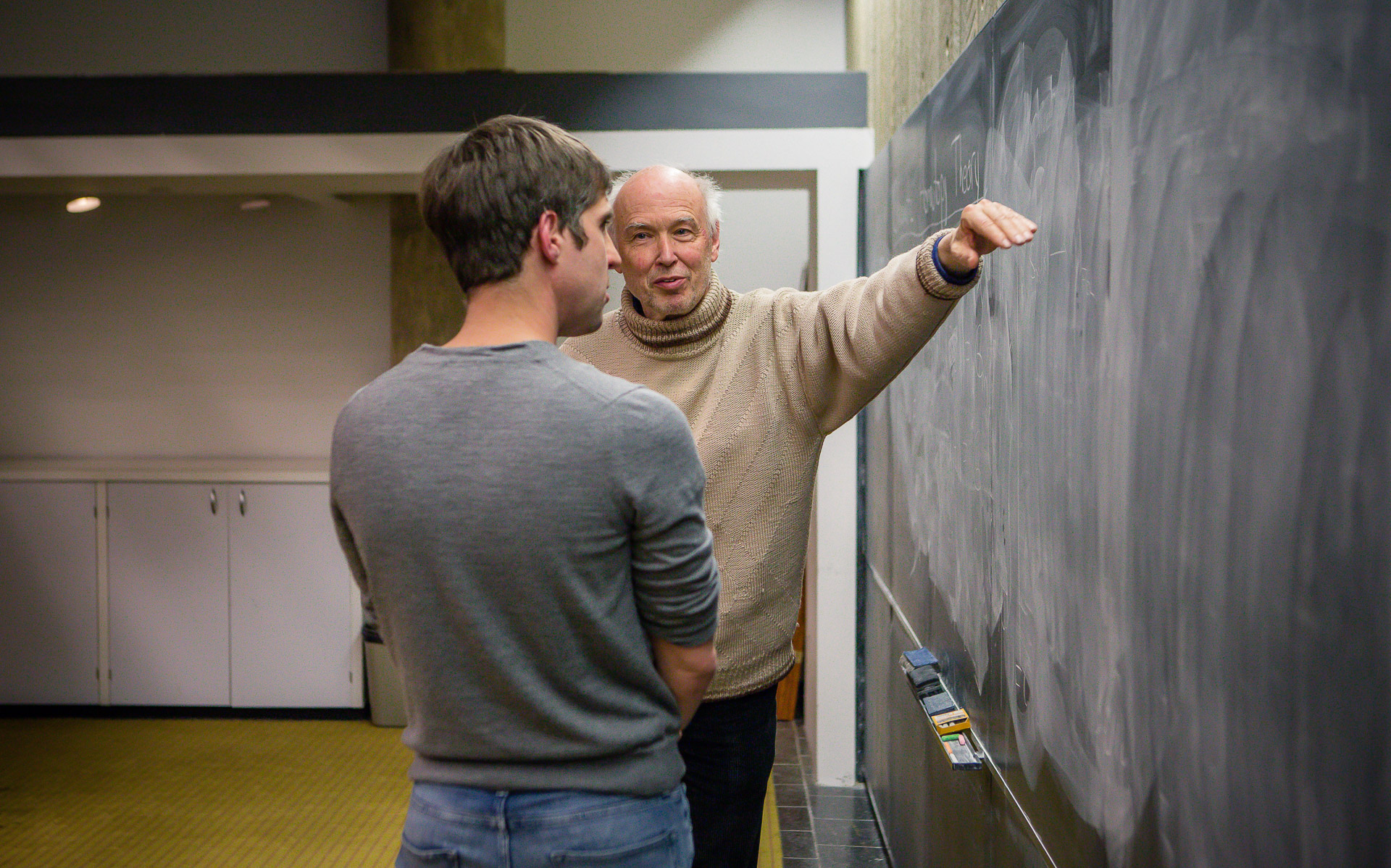
Professor Emeritus Pierre Deligne (right) with Professor Jacob Lurie (left)
Faculty
Albert Einstein was among the first IAS Professors in a long line of eminent scientists and scholars. Today, twenty-five permanent Faculty, each of whom are leading experts in their fields, select and mentor visiting scholars and scientists who are known as “Members.”
Current Faculty include two Fields Medalists and five MacArthur Fellows. In addition to their own research and the selection and mentorship of each year’s visiting scholars, Faculty deliver lectures and talks, organize exhibitions, symposia, and conferences at IAS and internationally, and publish papers and books, among other activities.
Past accomplishments by IAS Faculty and Members have pushed the boundaries of knowledge in general and have led to impactful developments that even today are carried forward by IAS’s current Faculty and Members and by researchers around the world.
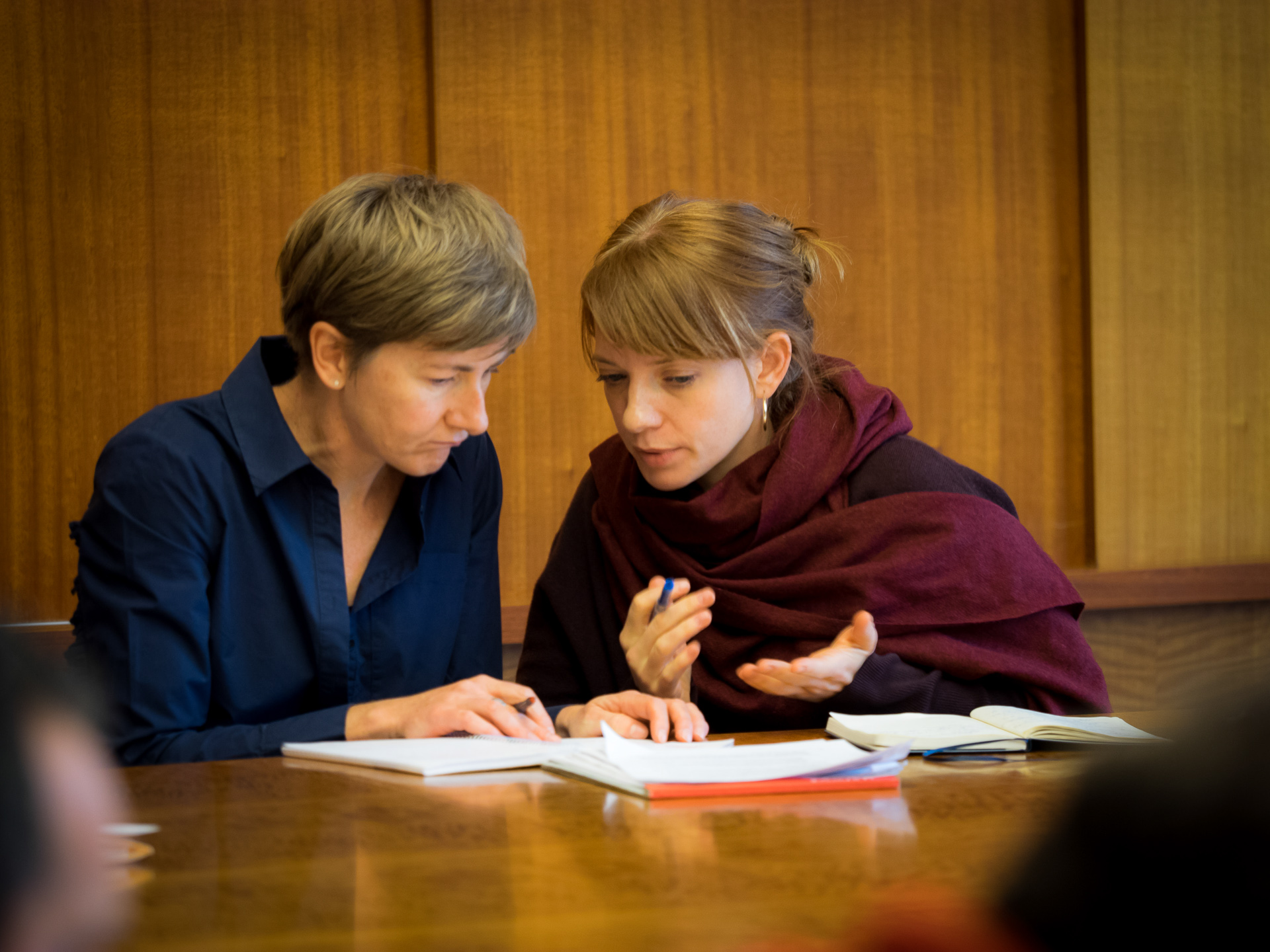
Anne McNevin (left) with Greta Wagner (right), White Levy Room, December 2018
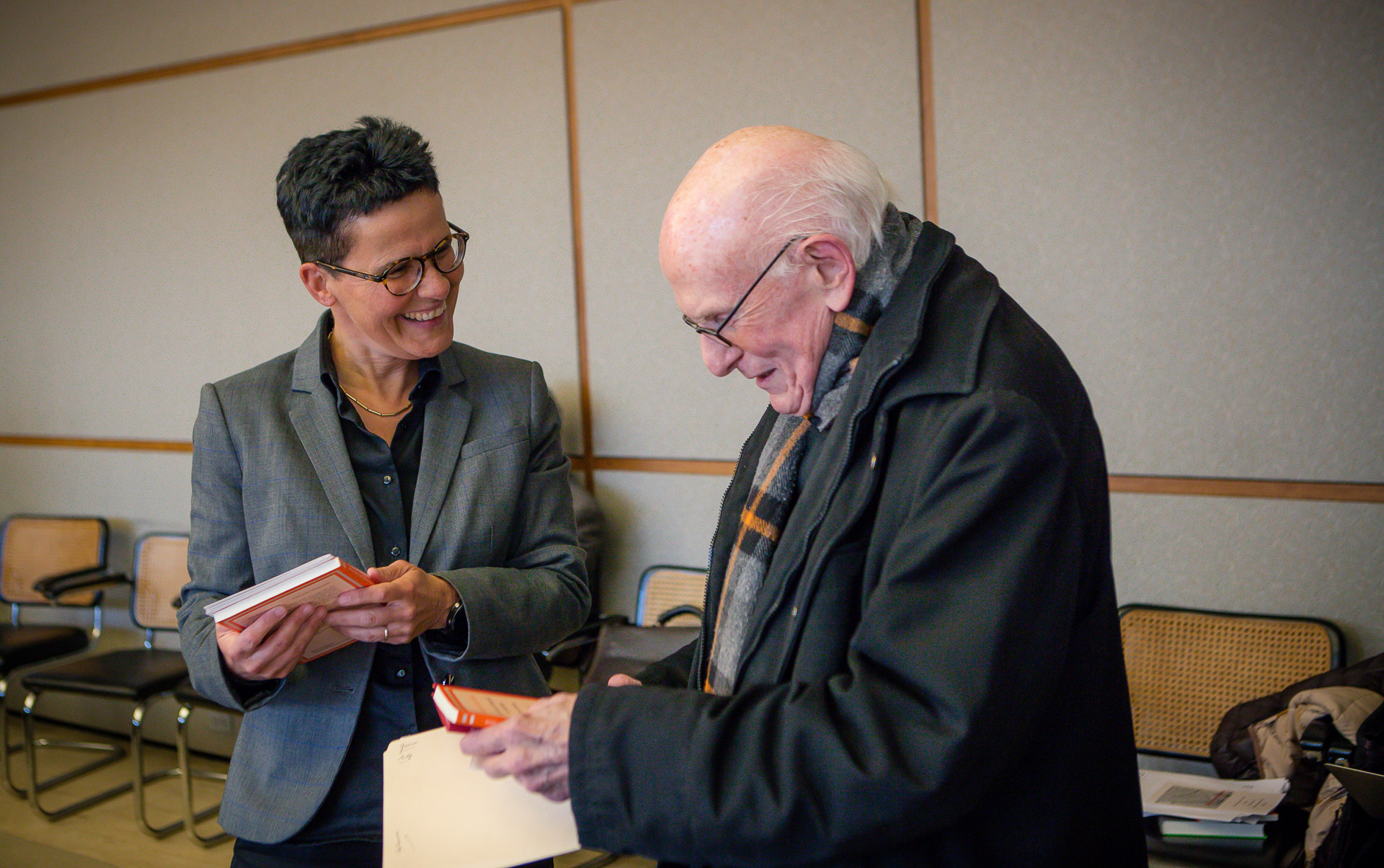
Professor Sabine Schmidtke (left) with Professor Emeritus Glen Bowersock (right), February 2020
Members
Members are chosen through a highly competitive process, and they range from early career postdoctoral researchers to senior faculty members who spend sabbaticals at IAS. Members frequently describe their time at IAS as an amazing gift, one of the most productive periods in their academic careers.
Each year, approximately 250 Members are selected from more than 1,500 applicants. Members are selected by the Faculty of each School and come to the Institute for periods as short as one term or as long as several years. Young scholars and applicants from nontraditional backgrounds who have outstanding promise are considered, as are senior scholars whose reputations are already well established.
The major consideration in the appointment process is the expectation that each Member’s period of residence at the Institute will result in work of significance and originality. Many Members pursue research related to the special interests of one or more of the Faculty. In other instances, the research of Members is in areas not currently represented by a member of the Faculty. Applications must be submitted during the academic year preceding the year of membership. For more information about applying, visit ias.edu/apply.
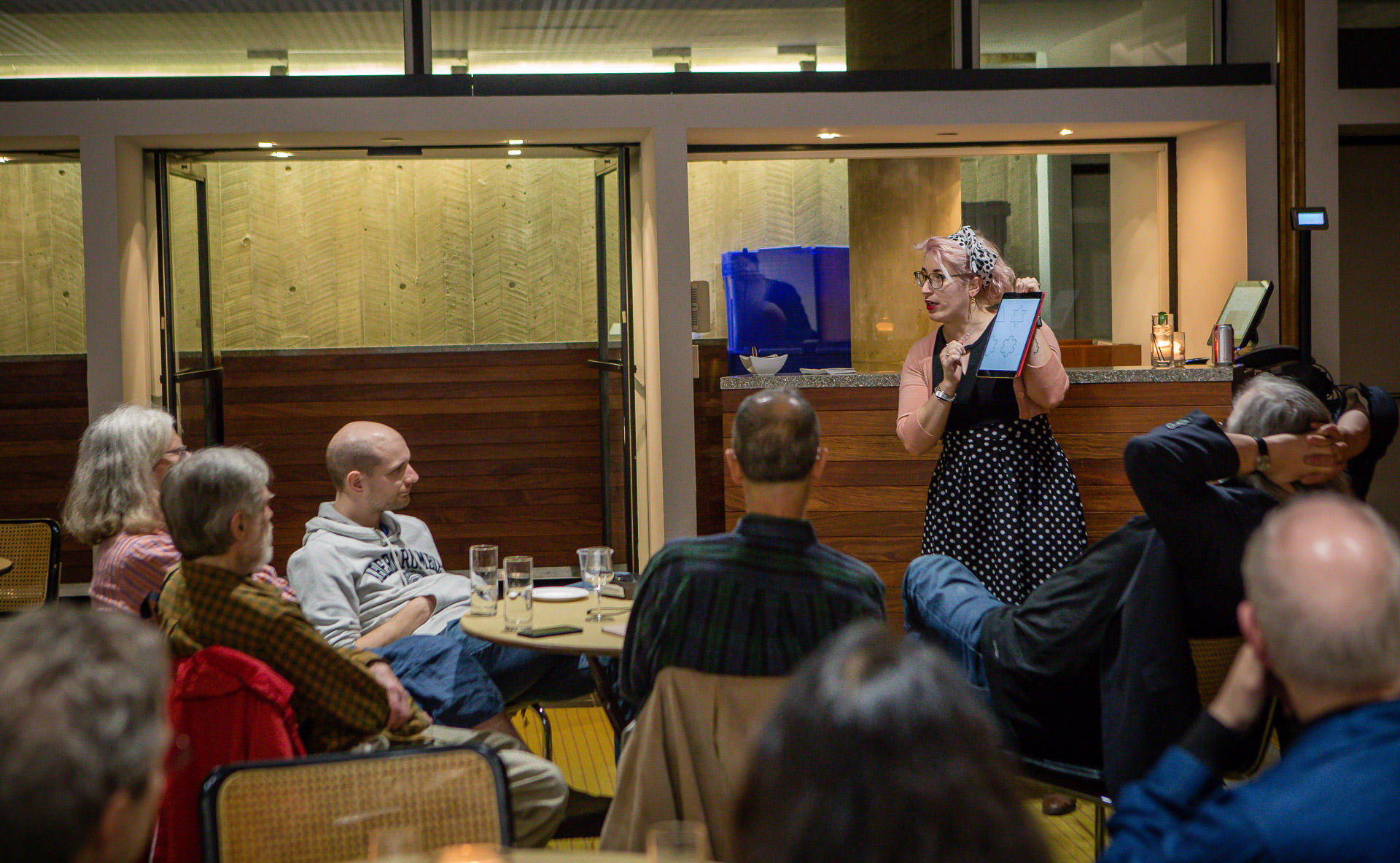
Silvia Ghinassi gives an After Hours Conversation, February 2020
Academic Resources
The Historical Studies–Social Science Library, designed by Wallace K. Harrison and completed in 1965, contains some 125,000 volumes and has subscriptions to over one thousand journals. It also contains the Institute’s rare book collection, the gift of Lessing J. Rosenwald, which consists of about two thousand volumes on the history of science and was compiled by Herbert M. Evans in the 1930s. The collection includes numerous first editions of important scientific works in mathematics, astronomy, physics, and the life sciences. Additional volumes have been added through various gifts, most notably through the Leon Levy Fund.
The IAS Spinoza Research Collection, held in the rare book collection, contains 324 titles that illustrate the clandestine and subversive publishing history of Spinoza’s major works. The Library also contains a collection of Mongolian and East Asian materials, the library of Walther Heissig, a noted Central Asian studies scholar, which came from the Princeton University East Asian Studies Department and Princeton University Library. The Library holds Giorgio Tonelli’s collection of Enlightenment materials as well as collections from past Professors including Ernst H. Kantorowicz, Erwin Panofsky, Kirk Varnedoe, Oleg Grabar, Clifford Geertz, and Harry Woolf.
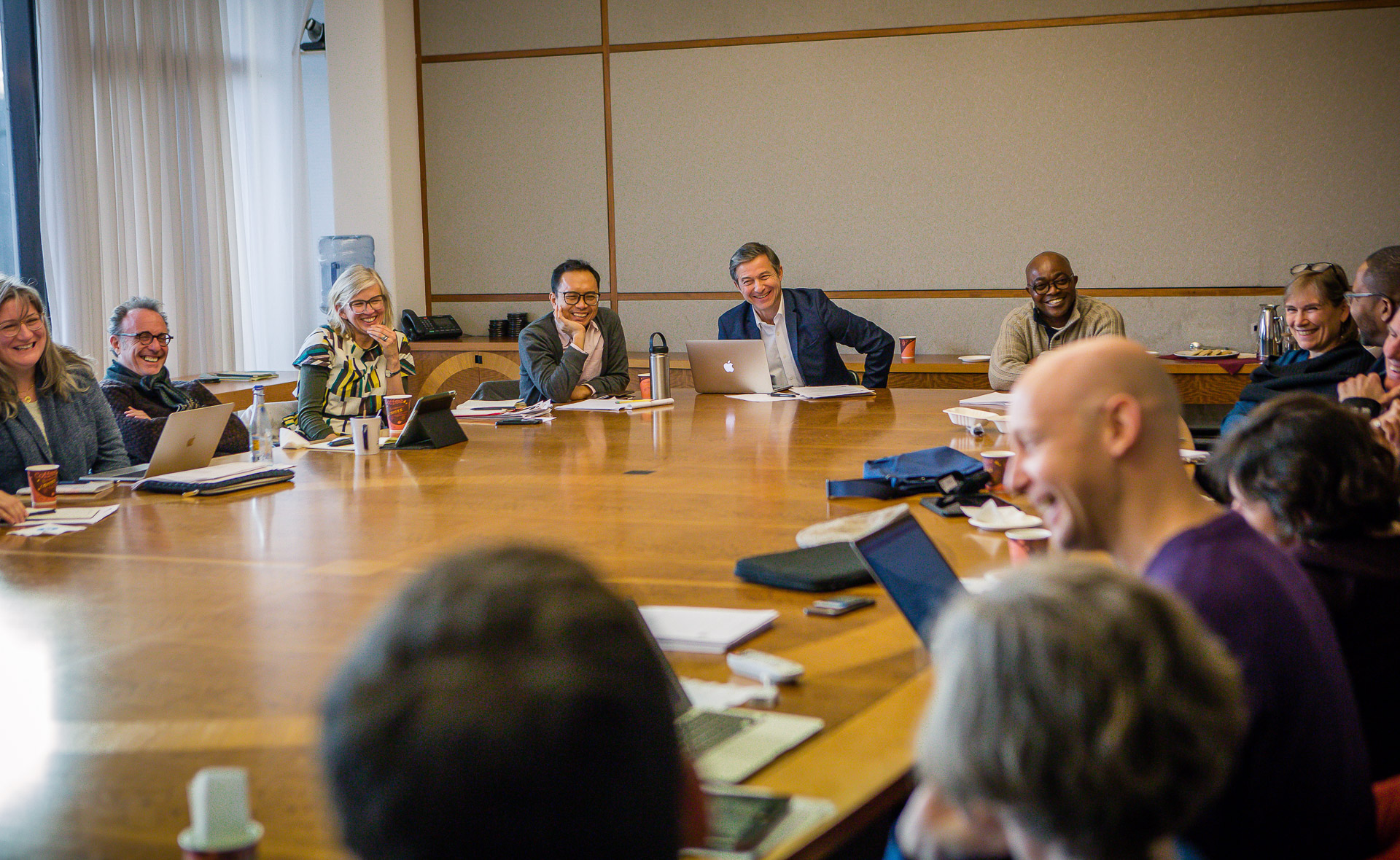
Social Science seminar, White Levy Room, December 2019
The Mathematics–Natural Sciences Library, located in Fuld Hall, includes about thirty thousand volumes of monographs and bound periodicals as well as 140 active journal subscriptions, and spans pure and applied mathematics, astrophysics, theoretical and mathematical physics, and biology. The M–NS Library has an extensive collection of the collected works of mathematicians, including those of Cauchy, Descartes, Fermat, Gauss, Hardy, and Poincaré.
Both of the Institute’s libraries provide individualized services, access to databases, and environments to facilitate research. The Libraries participate in the OCLC Research Libraries Partnership, which affords Institute scholars access to an extensive interlibrary loan system. In 1945, the Institute made a substantial financial contribution toward the creation of the Firestone Library at Princeton University—as a result, all scholars affiliated with the Institute enjoy the same privileges as Princeton University faculty in the Princeton University Library system and also have privileges in the library of the Princeton Theological Seminary.
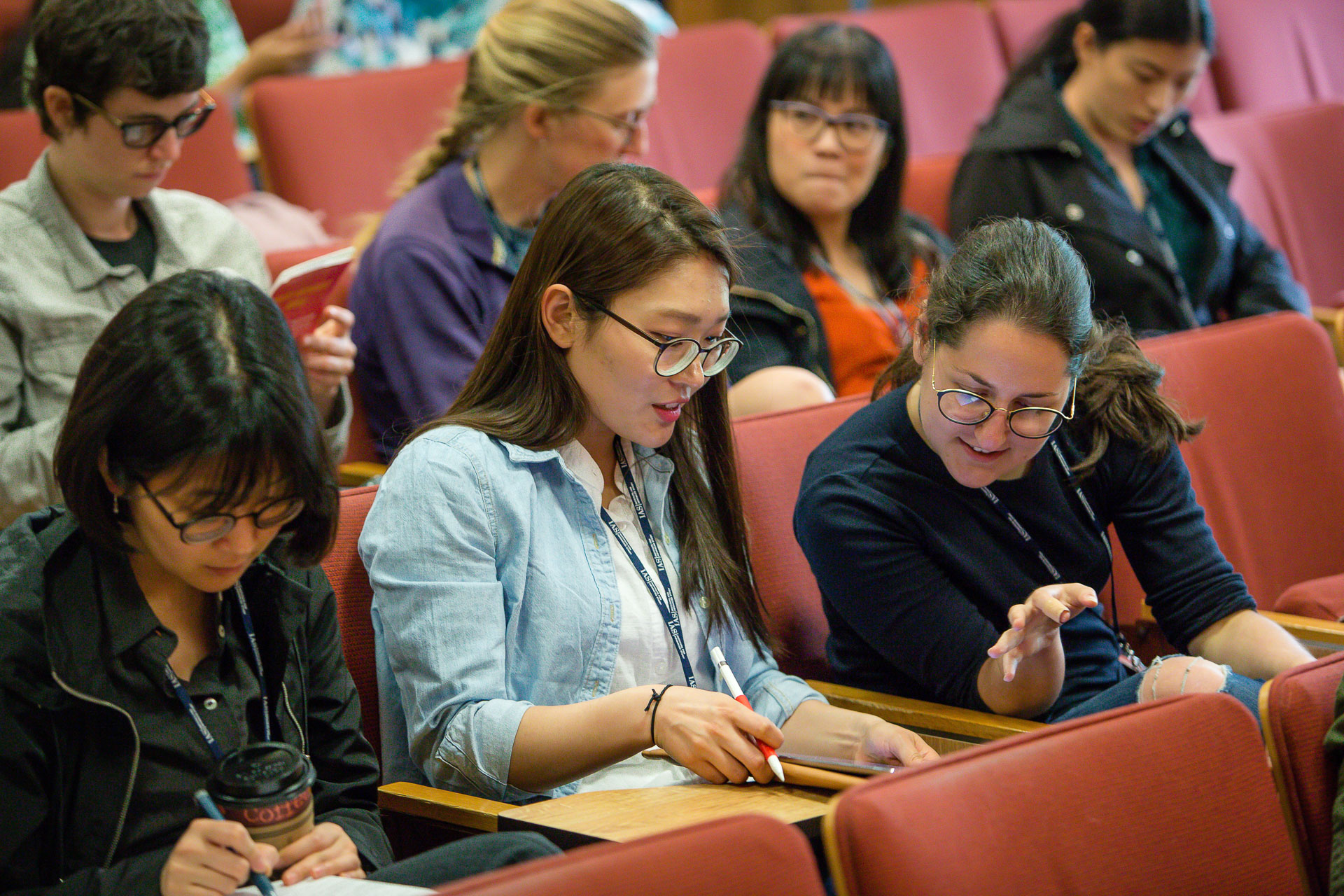
Women and Mathematics, May 2019
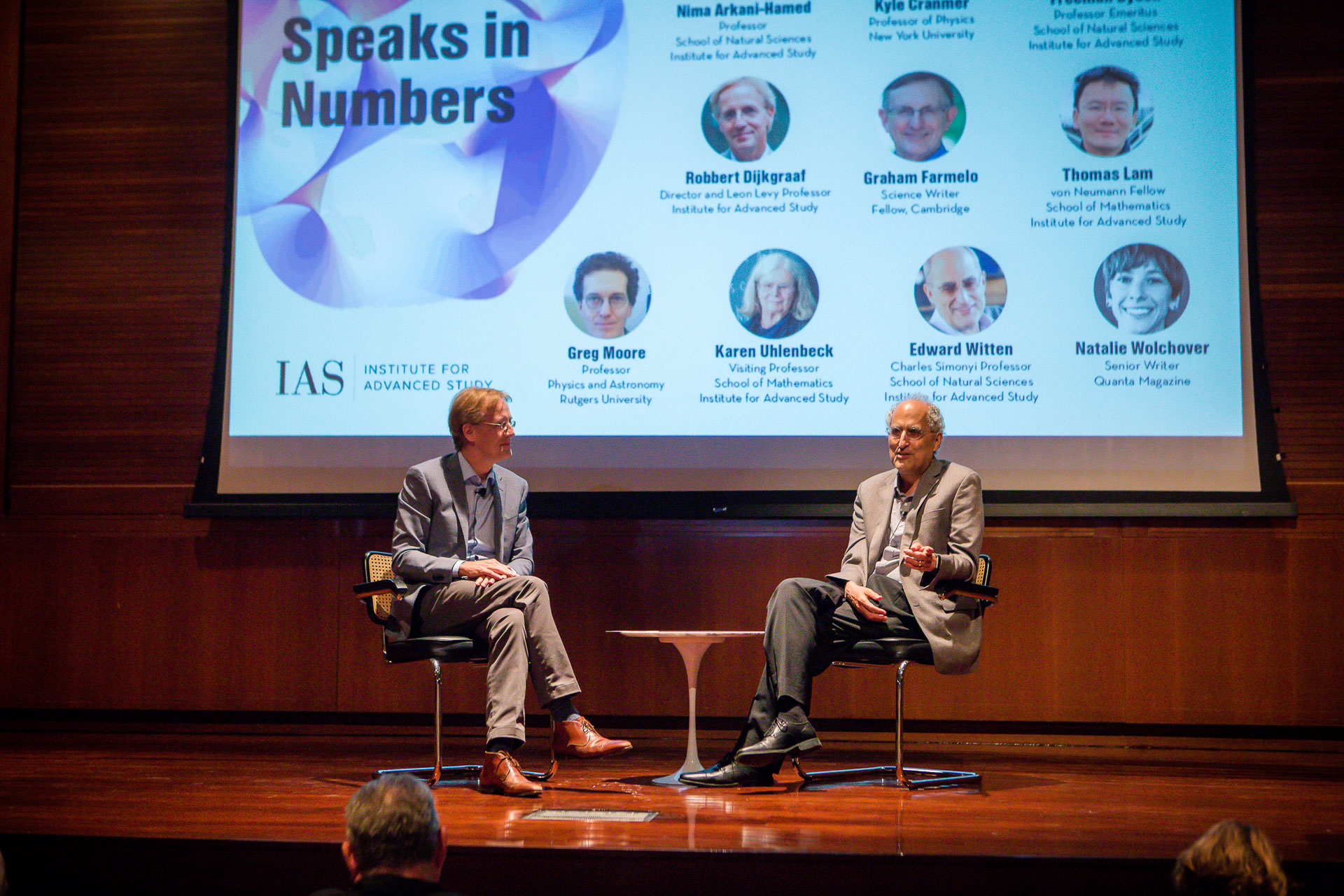
Director and Leon Levy Professor Robbert Dijkgraaf (left) with Charles Simonyi Professor Edward Witten (right)
The Shelby White and Leon Levy Archives Center contains records that date from the 1930s and consist of official correspondence of the Director’s Office, minutes of meetings of the Faculty and the Board of Trustees, correspondence concerning past Faculty and Members, records of the Electronic Computer Project, and the papers of select Faculty members, including astrophysicist John N. Bahcall. The archives also include the Institute’s photograph and oral history collections. Digitized copies of many photographs, documents, and other materials from the archives are available online at ias.edu/library/archives.
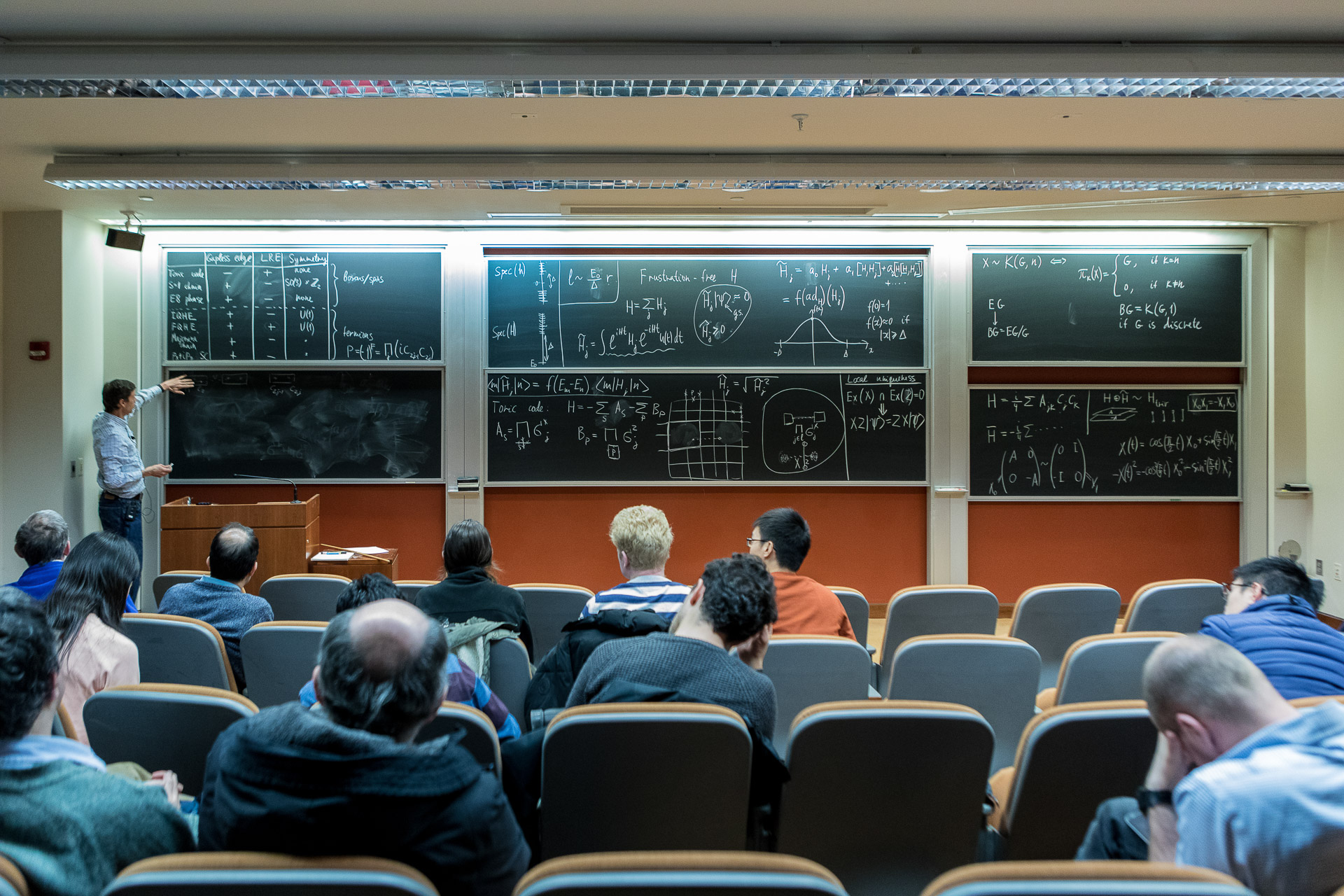
Natural Sciences seminar, Bloomberg Hall, December 2019
Campus Life
The Institute is located on 800 acres of woods, farmland, and academic campus grounds. Within the setting of a small college, IAS provides libraries, academic support, living, dining, and other services on site to provide scholars with maximum time for study and interaction with colleagues. Faculty and Members are a part of the larger community of Princeton, New Jersey, with numerous institutions of research and learning nearby. Although the Institute has no administrative connection with Princeton University, there has always been close collaboration between the two institutions and its excellent library facilities are available to Institute scholars. In 2020–21, IAS lectures, concerts, and talks will be held in a virtual setting.
Housing
Members live in an academic village of apartments, originally designed by Marcel Breuer in 1957, at the edge of the Institute’s campus, woodland, and farmland.
Dining
The Dining Hall, located in Simons Hall, was created by Robert Geddes as a replacement for the original lunchroom on the fourth floor of Fuld Hall. Normally, the Dining Hall is a meeting-point for lunches and twice-weekly dinners. During the Covid-19 period, dining will continue in a more limited fashion, and lunch and breakfast will be served to-go.
Teatime
The tradition of teatime dates back to the Institute’s beginnings when Elizabeth Veblen, the wife of Oswald Veblen, then Professor in the School of Mathematics, introduced afternoon tea to the Institute community. Normally, each weekday at 3 p.m., the Common Room of Fuld Hall fills with Faculty, visiting scholars, and staff who gather for tea and cookies. During the Covid-19 period, teatime will continue in a more limited fashion, and tea and cookies will be served to-go.
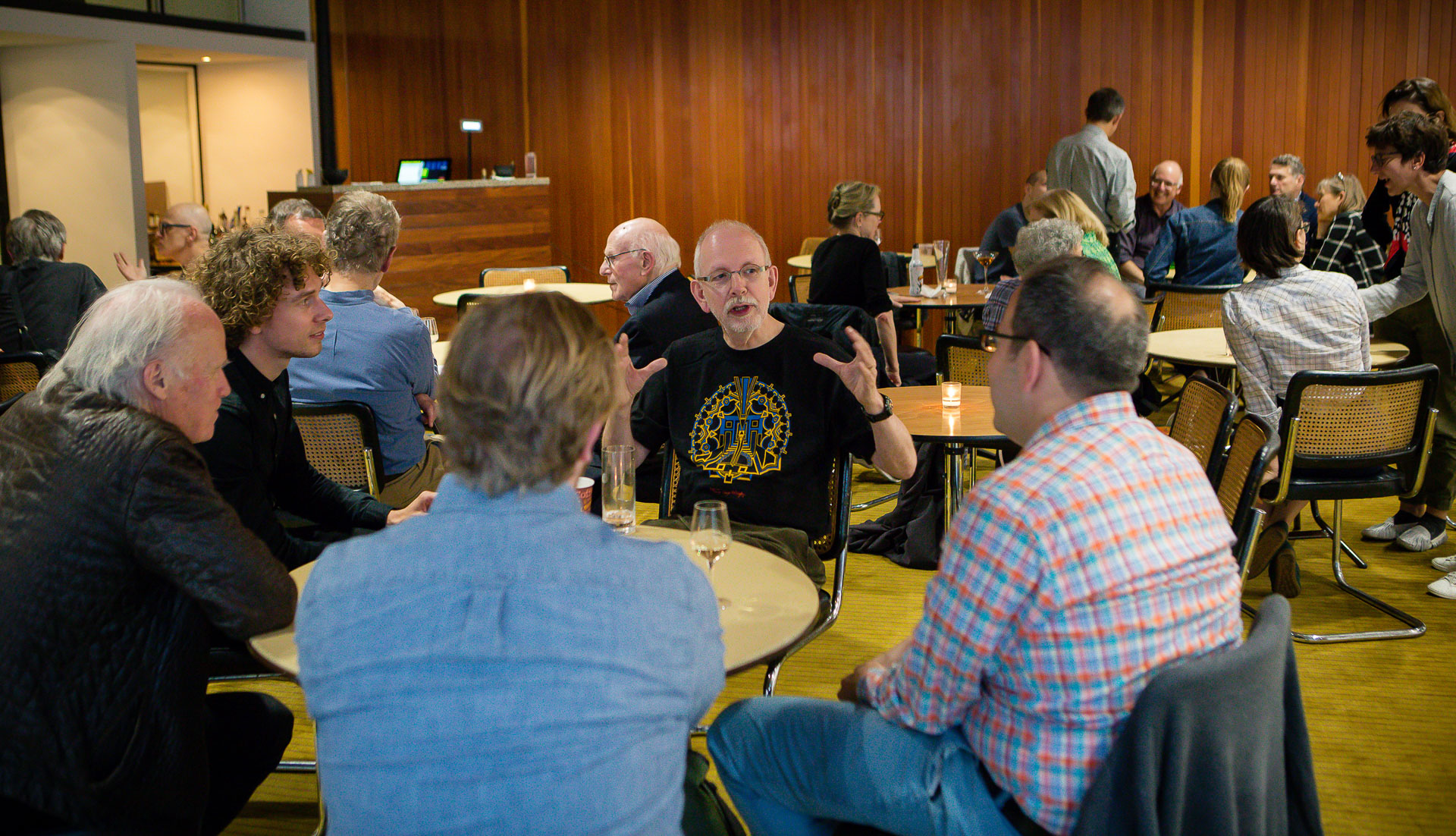
Professor Piet Hut (speaking) leads the After Hours Conversations series (October 2019)
After Hours Conversations
After Hours Conversations provides a forum for inter-School conversations in an informal and relaxed environment. Organized by the Program in Interdisciplinary Studies, the conversations feature brief talks by Institute Faculty, Members, Visitors, and staff, followed by discussion. For more information, visit ias.edu/ids/after-hours-conversations.
Daycare and Schools
Housed in the historic Electronic Computer Project building, Crossroads Nursery School and Infant Center was founded in 1947 by a group of Institute for Advanced Study parents who wanted a preschool experience for their children. Crossroads provides excellent early childhood care and education to many of IAS’s youngest residents, from three months to five years old. Total enrollment approaches sixty children. For older children, the town of Princeton has excellent public schools and a bus stop on campus, on a quiet road.
Institute Woods
The Institute’s abundant natural beauty includes the Institute Woods, fields, and wetlands, which form a key link in a network of green spaces in central New Jersey. The Institute Woods and Farmlands are enjoyed by bird watchers, walkers, runners, and cross-country skiers year-round. Normally, they are open to the public, except during the period of Covid-19, when they are only open to the Institute community.
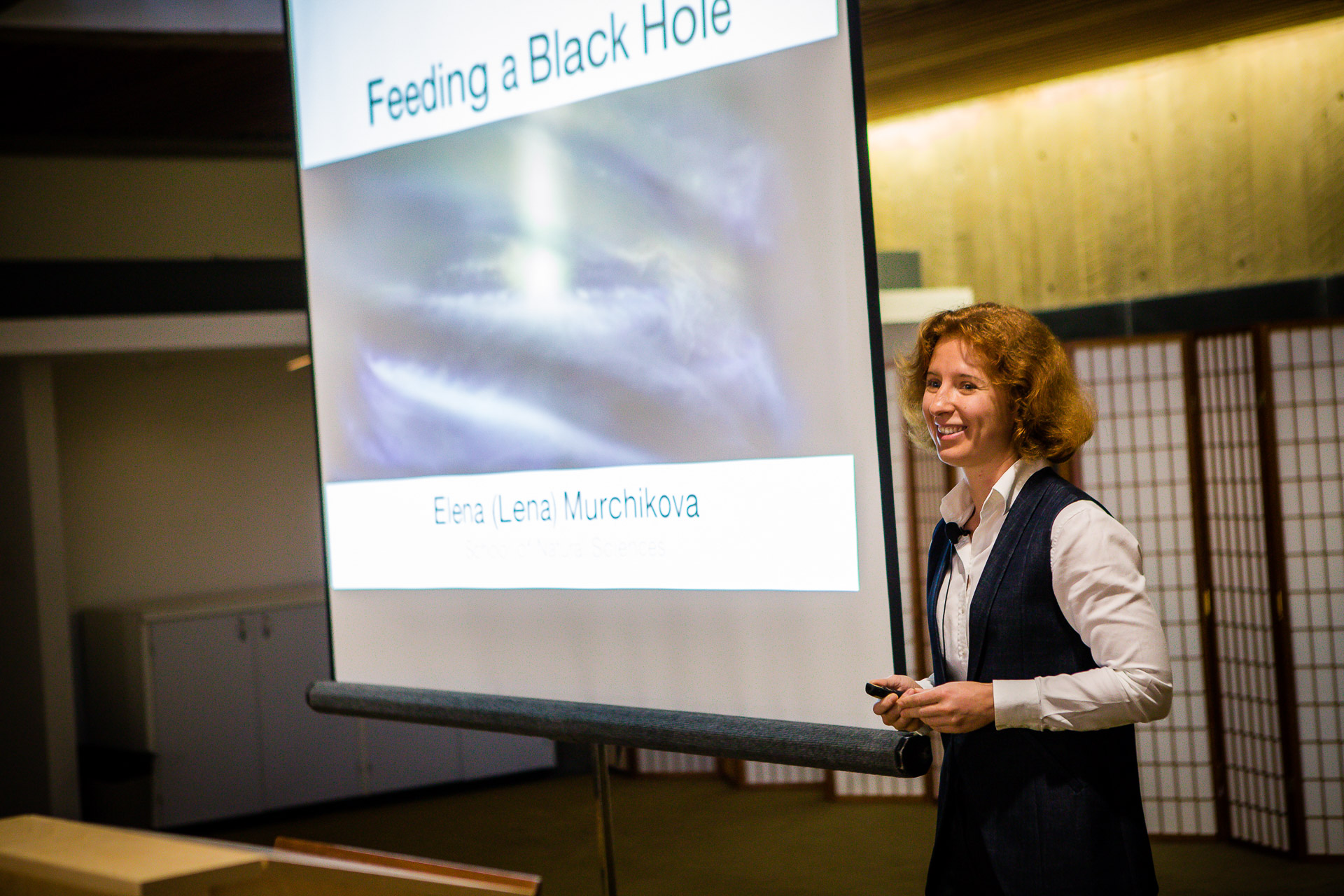
Lena Murchikova, September 2019
Special Programs and Outreach
Beyond the work that takes place in the four Schools, the Institute’s scope is broadened and enhanced by its special programs, which contribute much to the vitality of the Institute and extend its reach.
The Program in Interdisciplinary Studies, directed by Professor Piet Hut, explores ways of viewing the world that span a range of disciplines from computational astrophysics, geology, and paleontology to artificial intelligence, cognitive psychology, and philosophy.
The Director’s Visitors program enables the Director to invite scholars from a variety of fields, including areas not represented within the four Schools, to participate in the range of intellectual and social activities at the Institute.
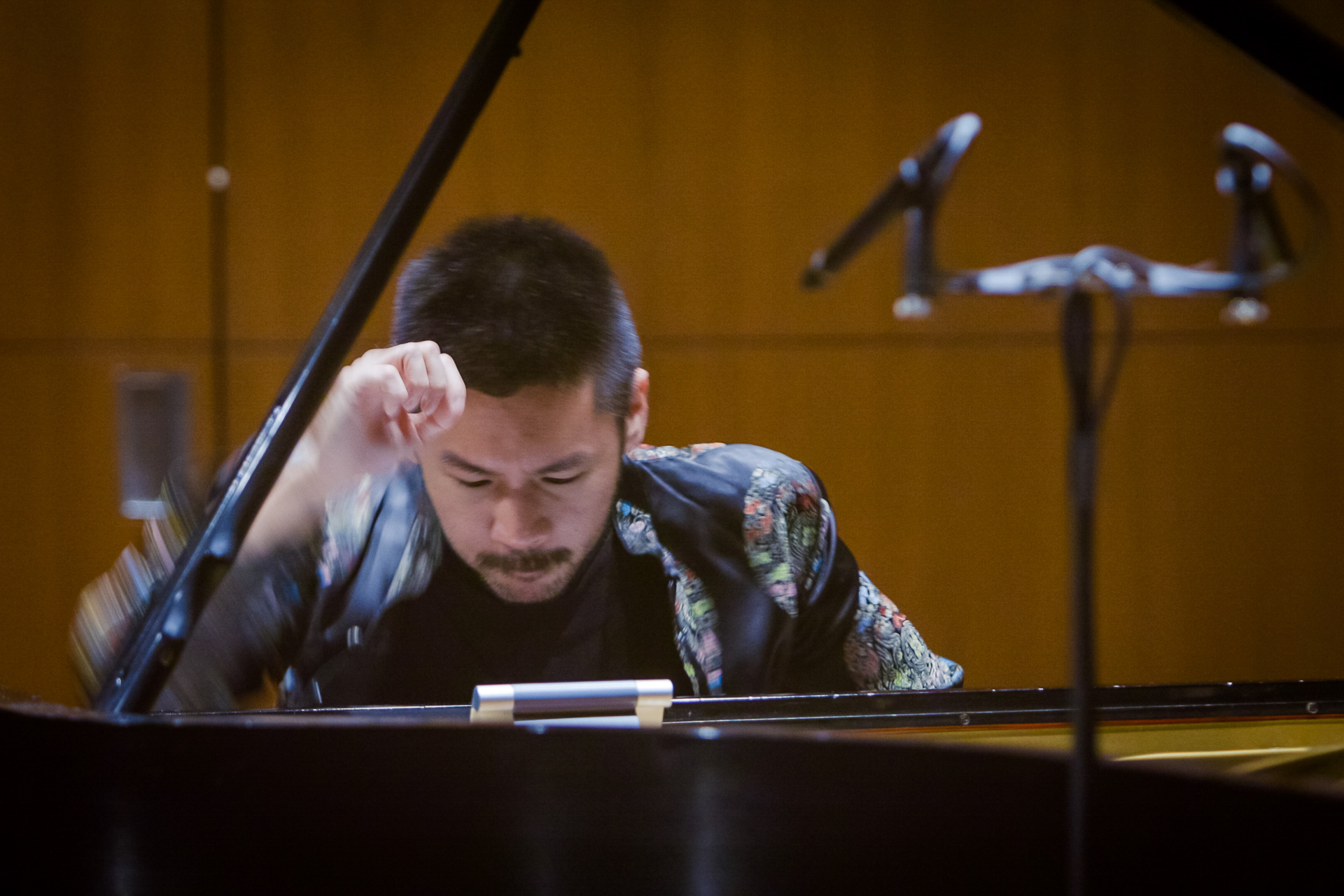
Conrad Tao, November 2019
The Artist-in-Residence Program was established in 1994 to create a musical presence within the Institute community, and to have in residence a person whose work could be experienced and appreciated by scholars from all disciplines. Artists-in-Residence have included Robert Taub, Jon Magnussen, Paul Moravec, Derek Bermel, and Sebastian Currier. Pulitzer Prize–winning composer David Lang has been in residence since 2016, curating the Edward T. Cone Concert Series and artist salons, along with pursuing his creative and intellectual work.
The Institute’s robust digital resources allow scholars opportunities for knowledge-sharing and discovery within a virtual setting. A Digital Scholarship@IAS initiative was formed in 2016 to accelerate the pace of research across disciplines and geographic locations by offering Faculty and Members new tools and technologies to gather and process large amounts of data, visualize the results, and make the data and results openly available.
The Women and Mathematics Program is an annual program with the mission to recruit and retain more women in mathematics. It was cofounded in 1993 by 2019 Abel Prize laureate Karen Uhlenbeck, IAS Distinguished Visiting Professor in the School of Mathematics, and former IAS Member Chuu-Lian Terng.
First held at IAS in 2002, Prospects in Theoretical Physics is a two-week residential summer program that provides lectures and informal sessions on the latest advances and open questions in theoretical physics for exceptionally promising graduate students and postdoctoral scholars. It encourages the participation of women, minorities, and students from smaller institutions that do not have extensive programs in theoretical physics or astrophysics.
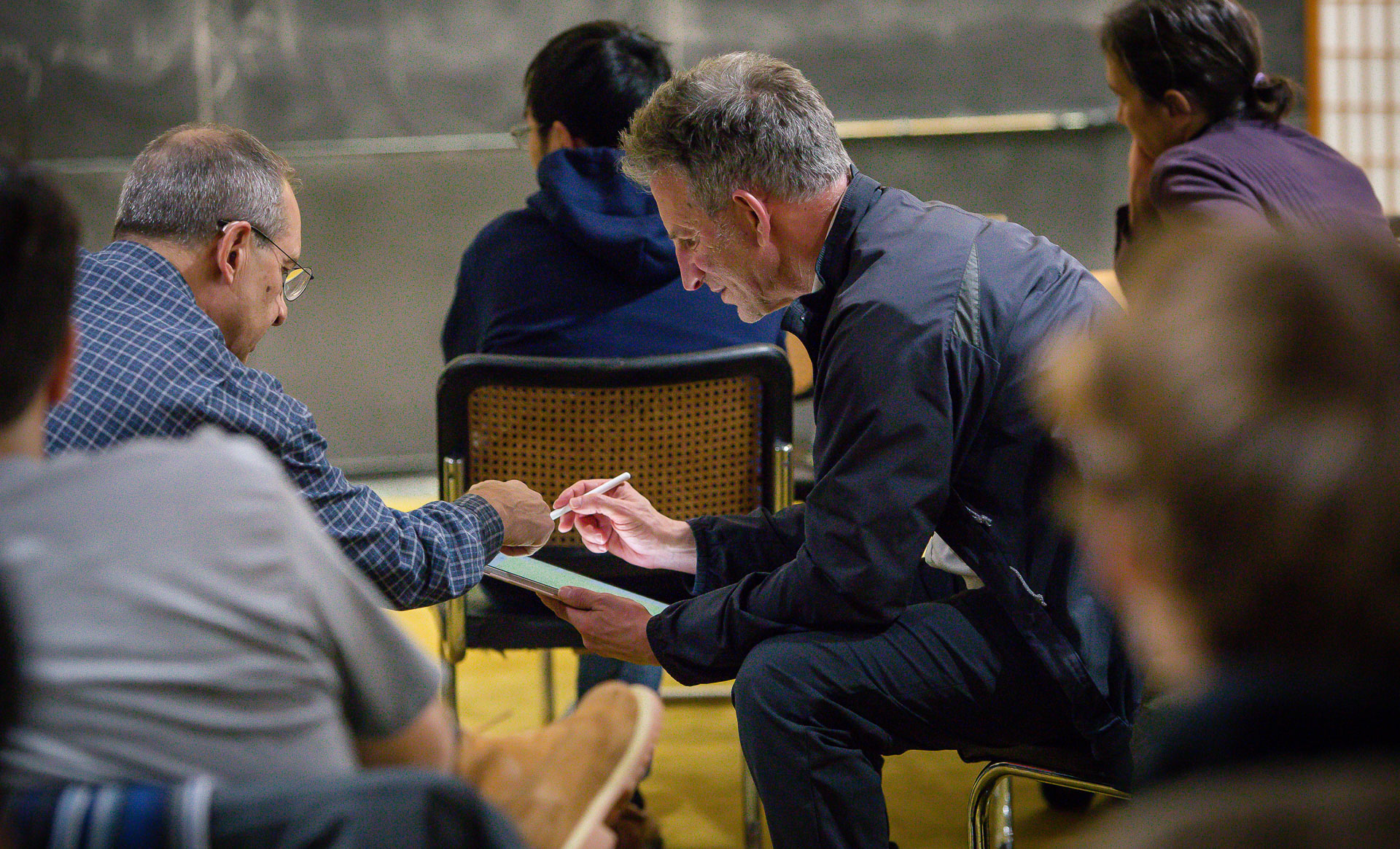
Mark Goresky (left) with Professor Peter Sarnak (right), December 2019
Since 1994, the IAS/Park City Mathematics Institute annual summer session brings together educators, researchers, and students for a three-week residential program in Park City, Utah. Through lectures, seminars, activities, and events, the program is designed to focus on particular topics each year.
The Summer Program in Social Science, led by Didier Fassin, James D. Wolfensohn Professor in the School of Social Science, is an interdisciplinary initiative for early-career scholars from Africa, the Middle East, and Latin America, which aims to enrich and expand the realm of social sciences through the confrontation of different intellectual traditions and perspectives.
* During the 2020–21 academic year, some annual programs may be held virtually or postponed due to Covid-19.
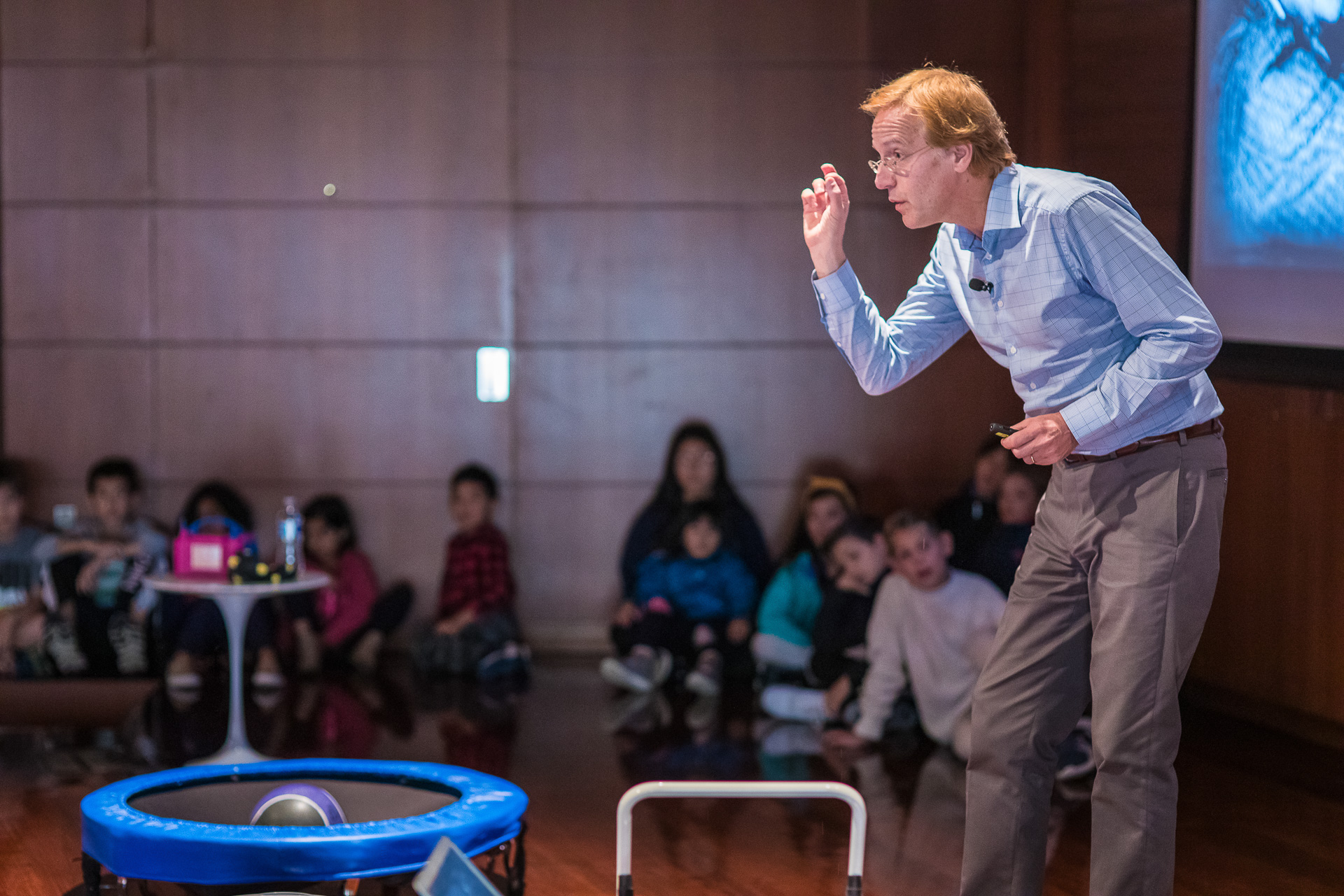
Director and Leon Levy Professor Robbert Dijkgraaf, November 2019
Finances
While the initial Bamberger endowment has increased in value over the years, in addition to other generous gifts, it provides only 53 percent of the Institute’s annual operating budget. The Institute receives no tuition or fees and is dependent on charitable contributions and grants for its operations. IAS does not have a community of students, parents, and graduates in the way of universities. The academic program at IAS is funded by IAS, through endowment income, grants, and gifts.
Among the greatest contributors to the Institute are:
Board of Trustees
One of IAS’s greatest treasures is and has been its distinguished Board of Trustees. Beginning with founders Caroline Bamberger Fuld and Louis Bamberger, the IAS Board has included some of the world’s most prominent executives, professors, philanthropists, entrepreneurs, university presidents, and other leaders. Visionary leadership and generosity by members of the Board enable IAS scholars to freely pursue their ideas and passionate interests.
Friends of IAS
The Friends of the Institute for Advanced Study, active since 1980, is a group of more than 200 supporters who make annual unrestricted contributions to the Institute that are essential to the Institute’s mission of supporting curiosity-driven research.
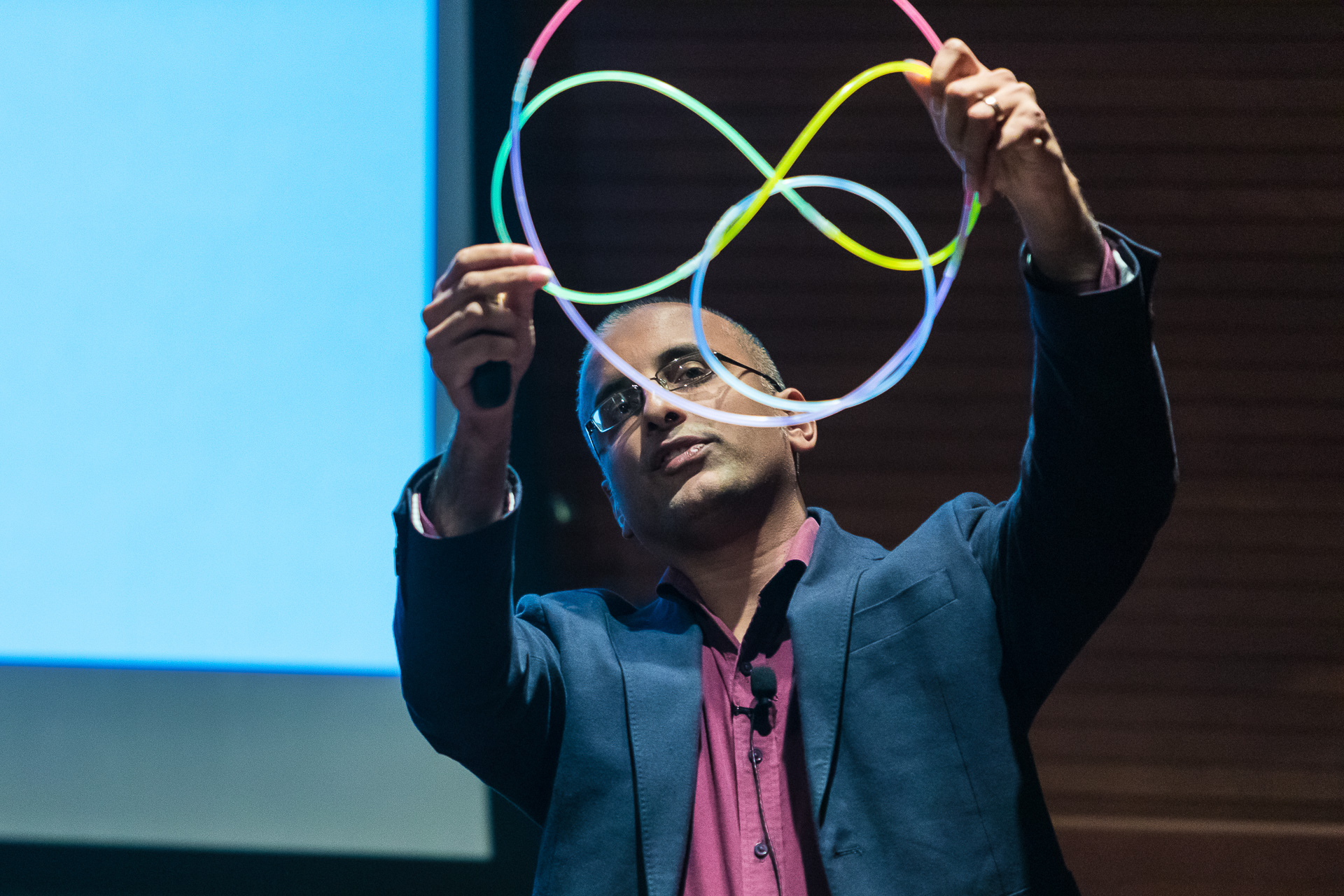
Robert and Luisa Fernholz Professor Akshay Venkatesh, October 2019
IAS and Beyond
The Association of Members of IAS (AMIAS) includes current and past Members of the Institute, now numbering more than eight thousand scholars and scientists worldwide. Thirty-five Nobel Laureates, forty-two of sixty Fields Medalists, nineteen of the twenty-two Abel Prize winners, as well as many Wolf and MacArthur Fellows, have held appointments at IAS.
For a full listing of scholars, which includes Niels Bohr, Noam Chomsky, Cécile DeWitt-Morette, Paul Dirac, T. S. Eliot, Emmy Noether, James Peebles, Quentin Skinner, and Karen Uhlenbeck, visit ias.edu/scholars/all-scholars.
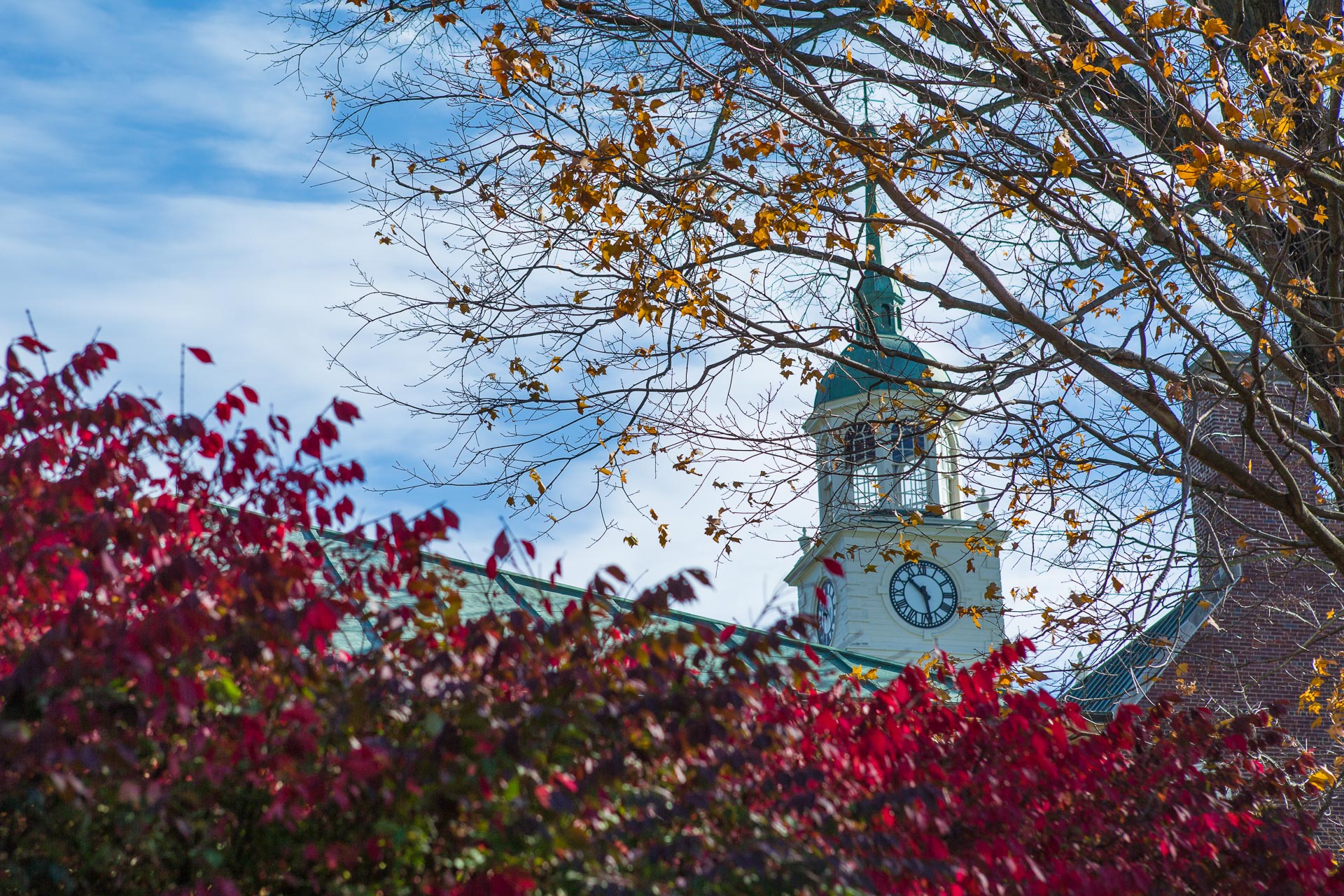
IAS Key Facts
Founded
May 20, 1930
Founding Gift
$5 million in 1930 by siblings Caroline Bamberger Fuld and Louis Bamberger
Opened
October 2, 1933
Official Motto
“Truth and Beauty” inspired by John Keats’s Ode on a Grecian Urn
Mission Statement
The Institute is pledged to assemble a group of scientists and scholars who
with their pupils and assistants may devote themselves to the task of
pushing beyond the present limits of human knowledge and to training those
who may “carry on” in this sense.
—Founding Director
Abraham Flexner, Organization Meeting,
October 10, 1930
Campus
First Building, Fuld Hall, opened in 1939
Architects
Jens Frederick Larsen, Fuld Hall, 1939; Marcel Breuer, Member Housing, 1957; Wallace K. Harrison, Historical Studies–Social Science Library, 1965; Robert Geddes, West Building and Simons Hall, 1972, and Bloomberg Hall, 2002; Cesar Pelli, Simonyi Hall and Wolfensohn Hall, 1994, Simons Center for Systems Biology, 2007; Steven Holl, Rubenstein Commons, 2020
Past and Present Faculty
Past and Present Directors
Trustees
Administration
